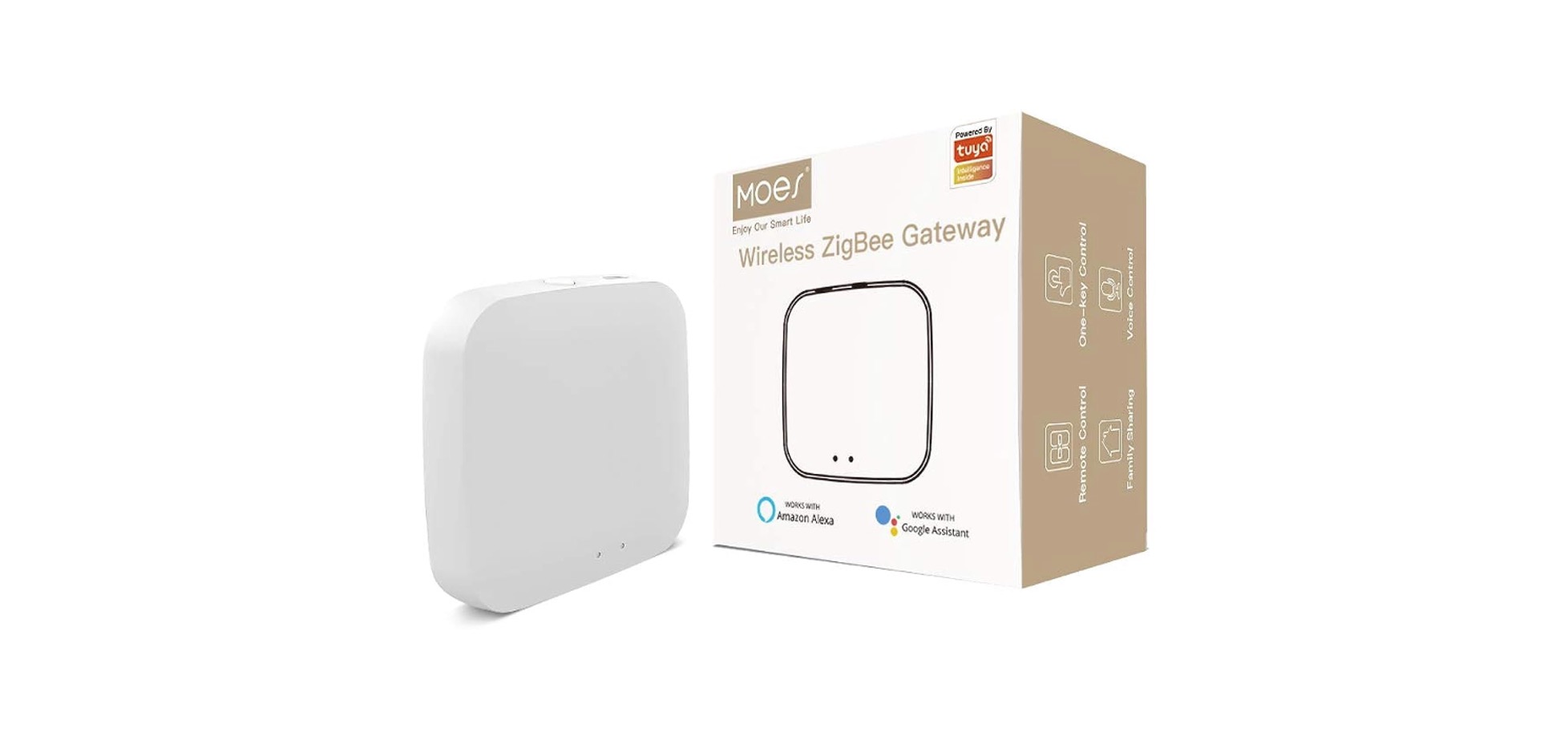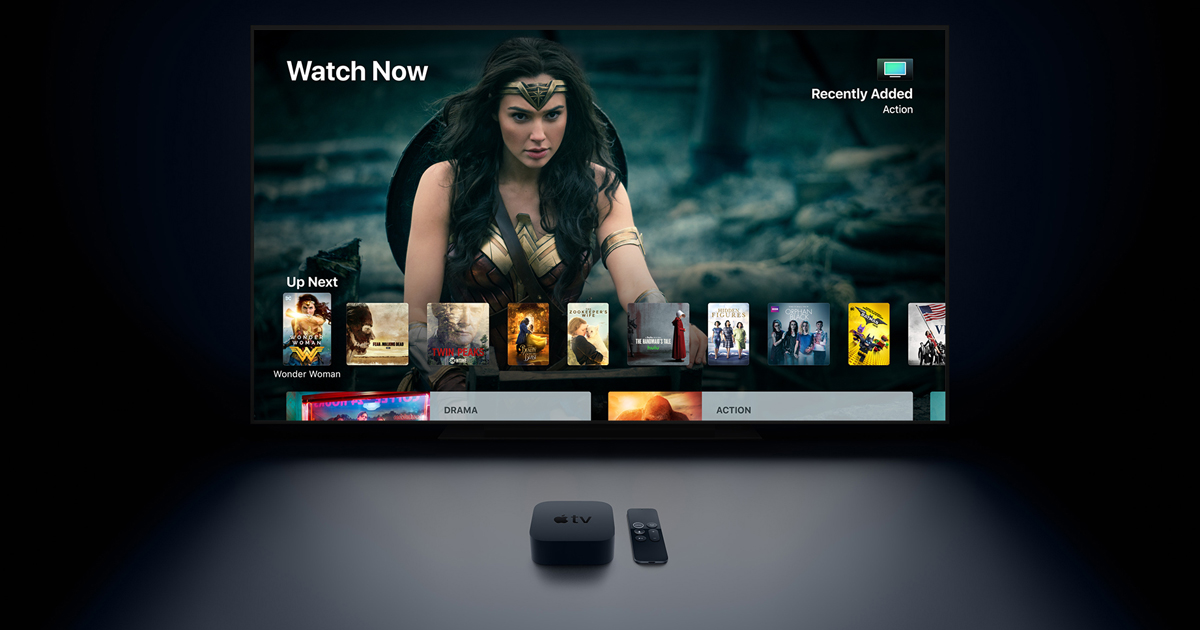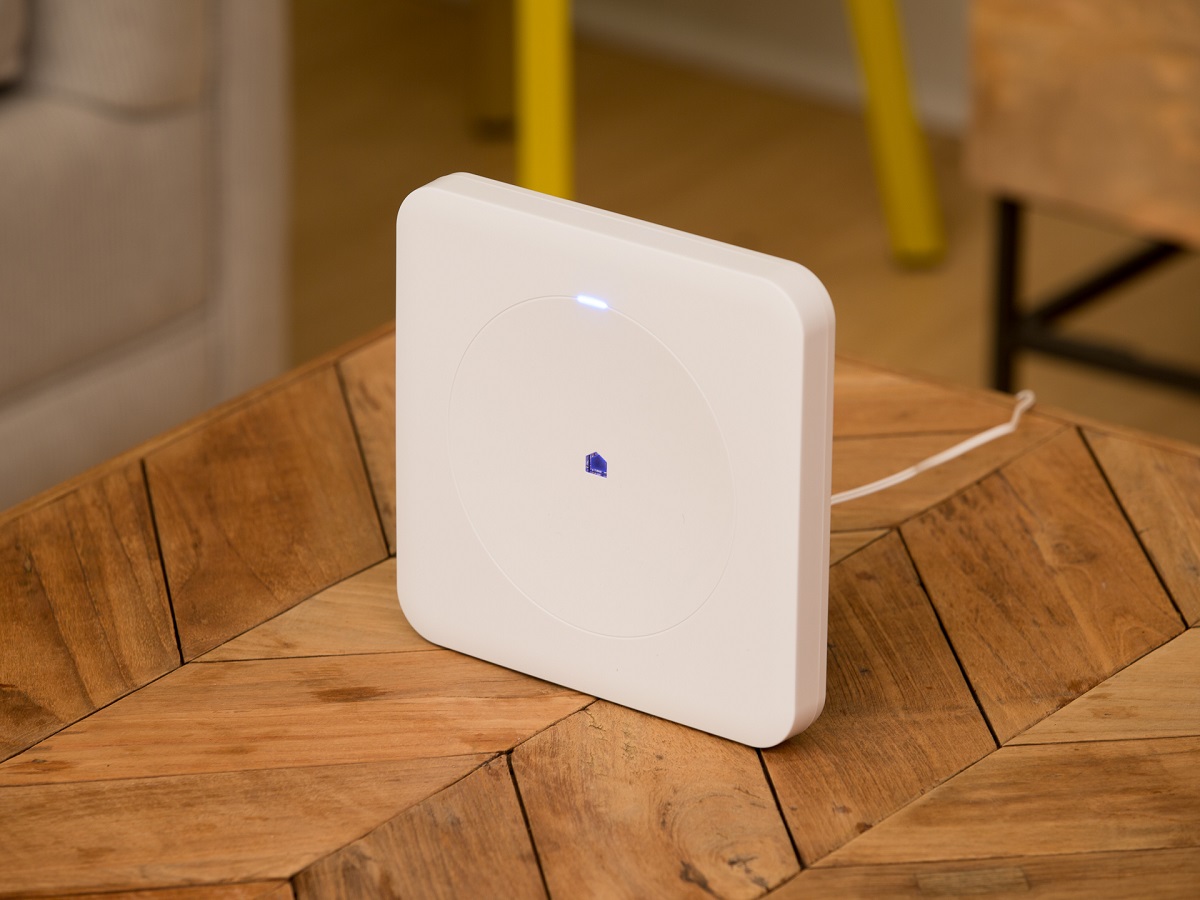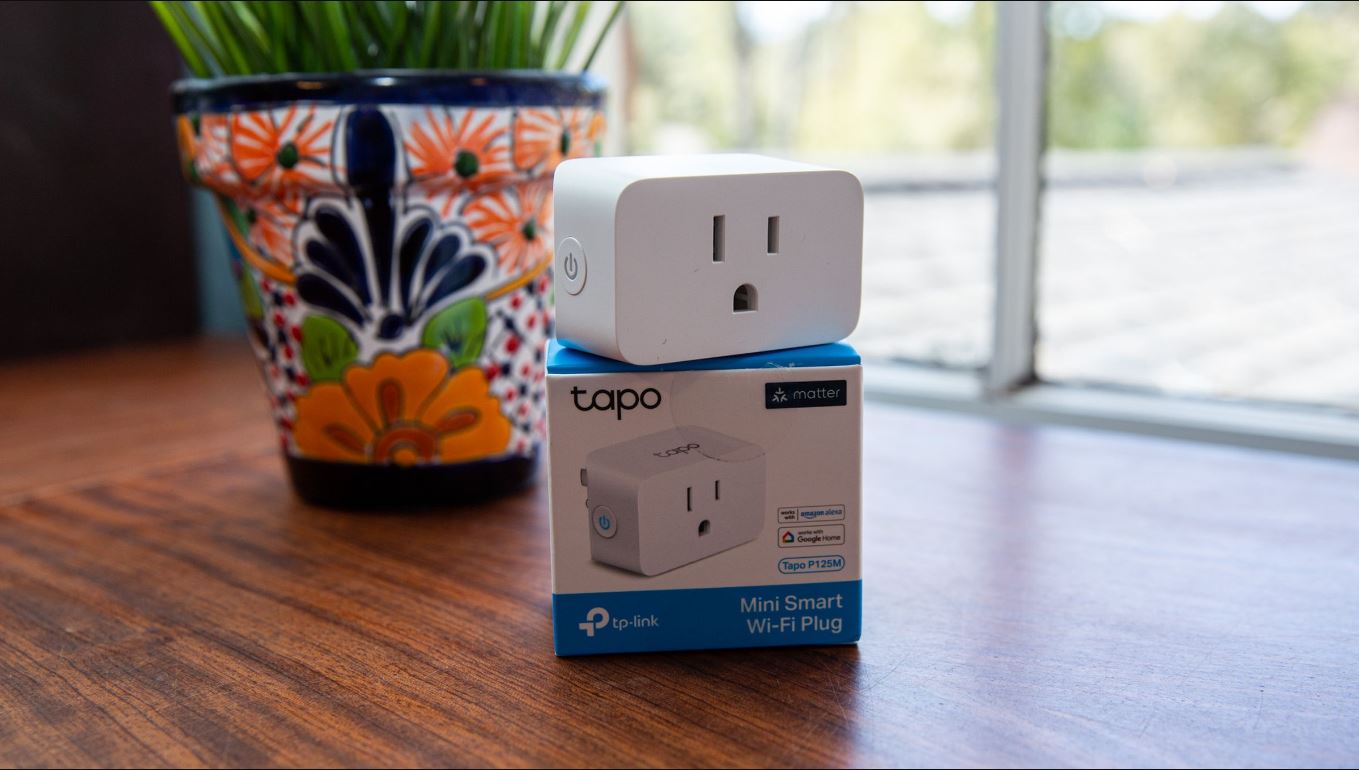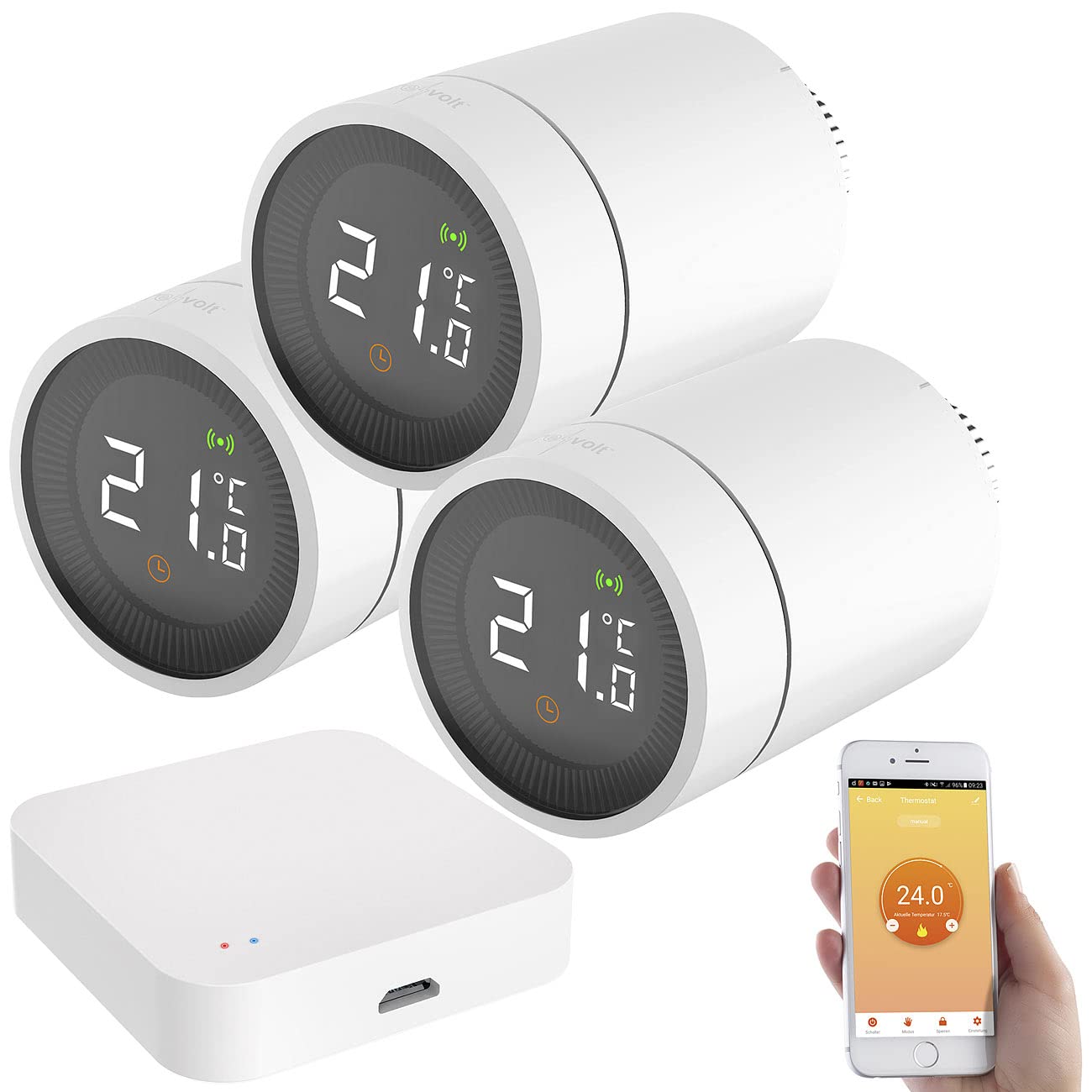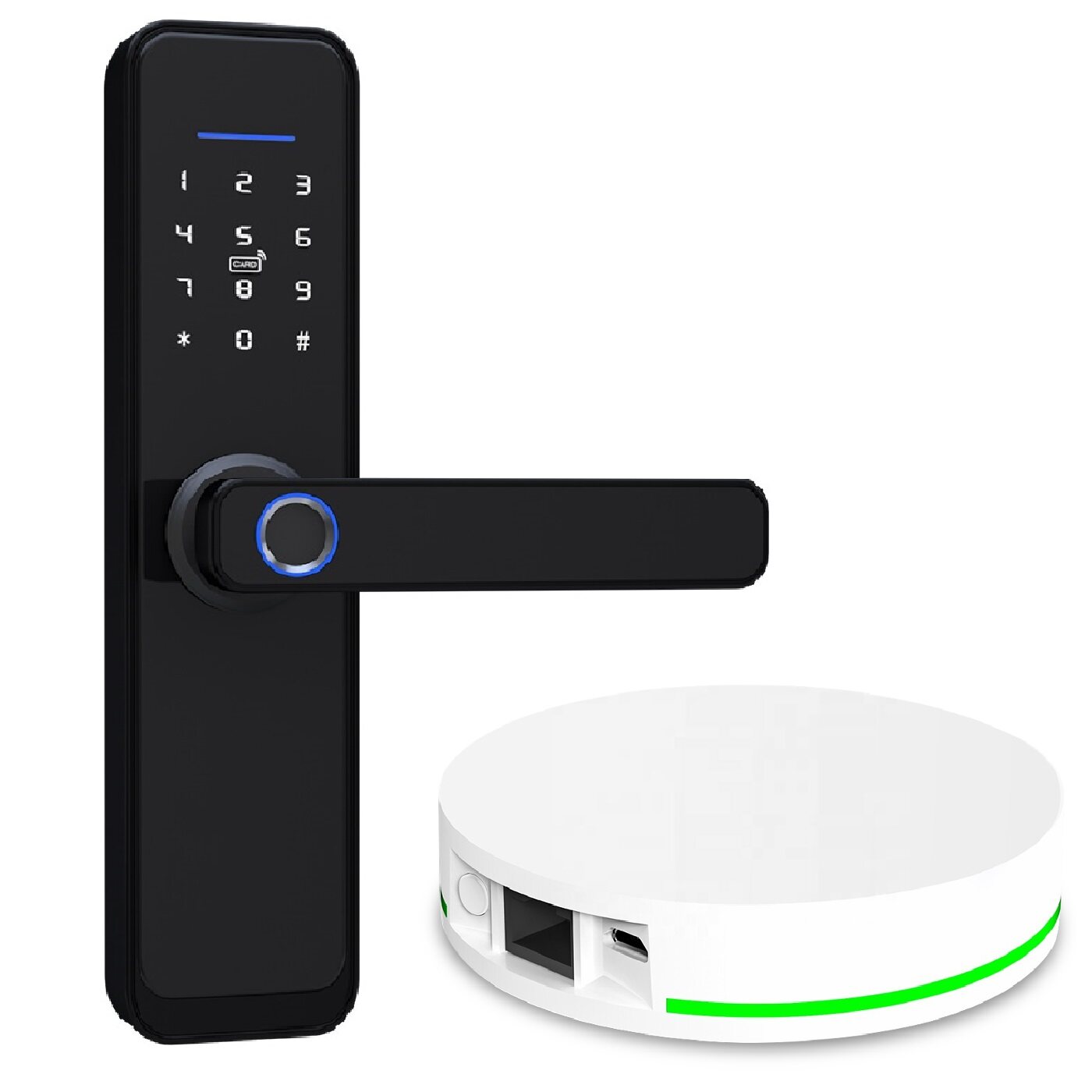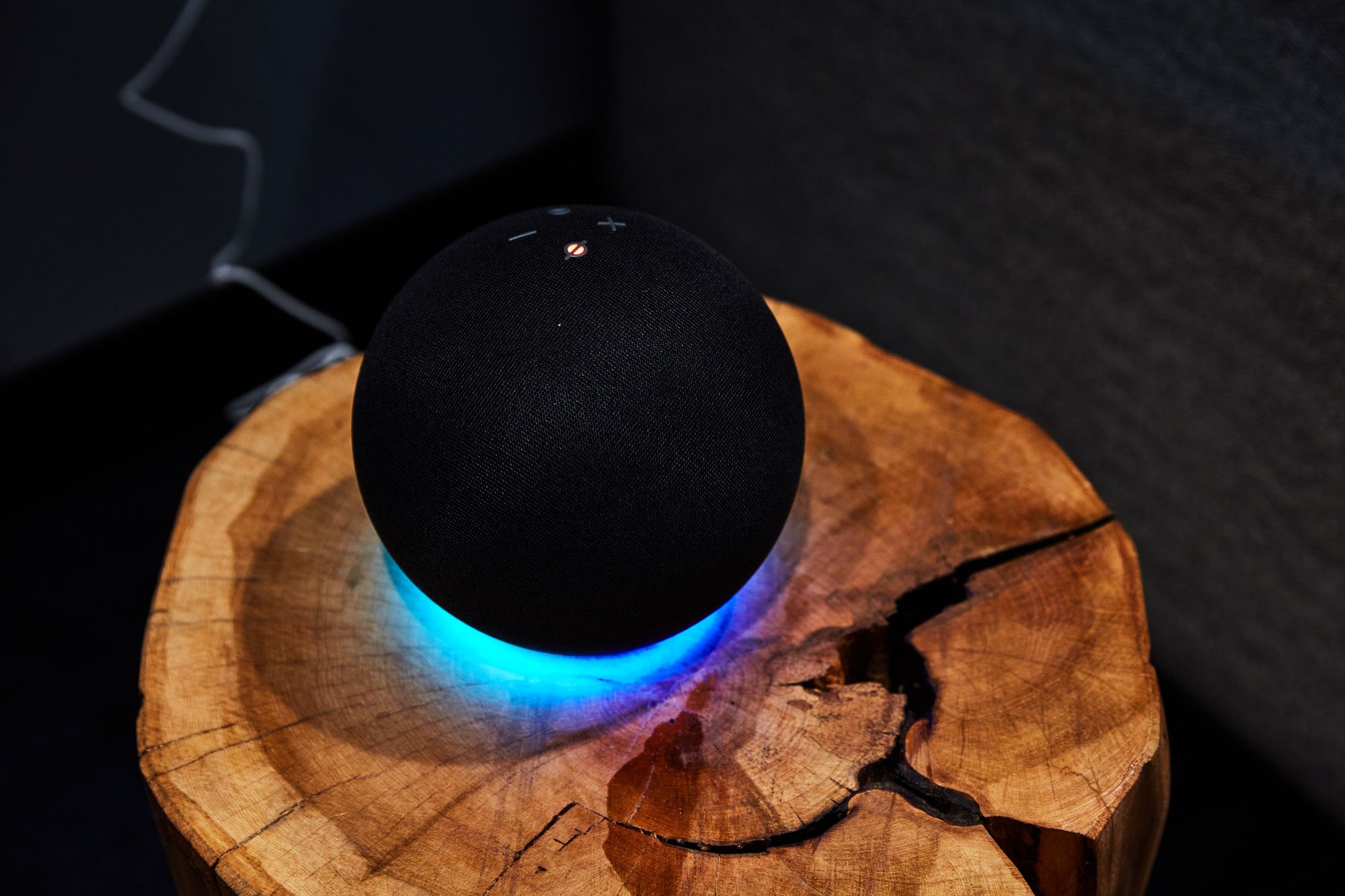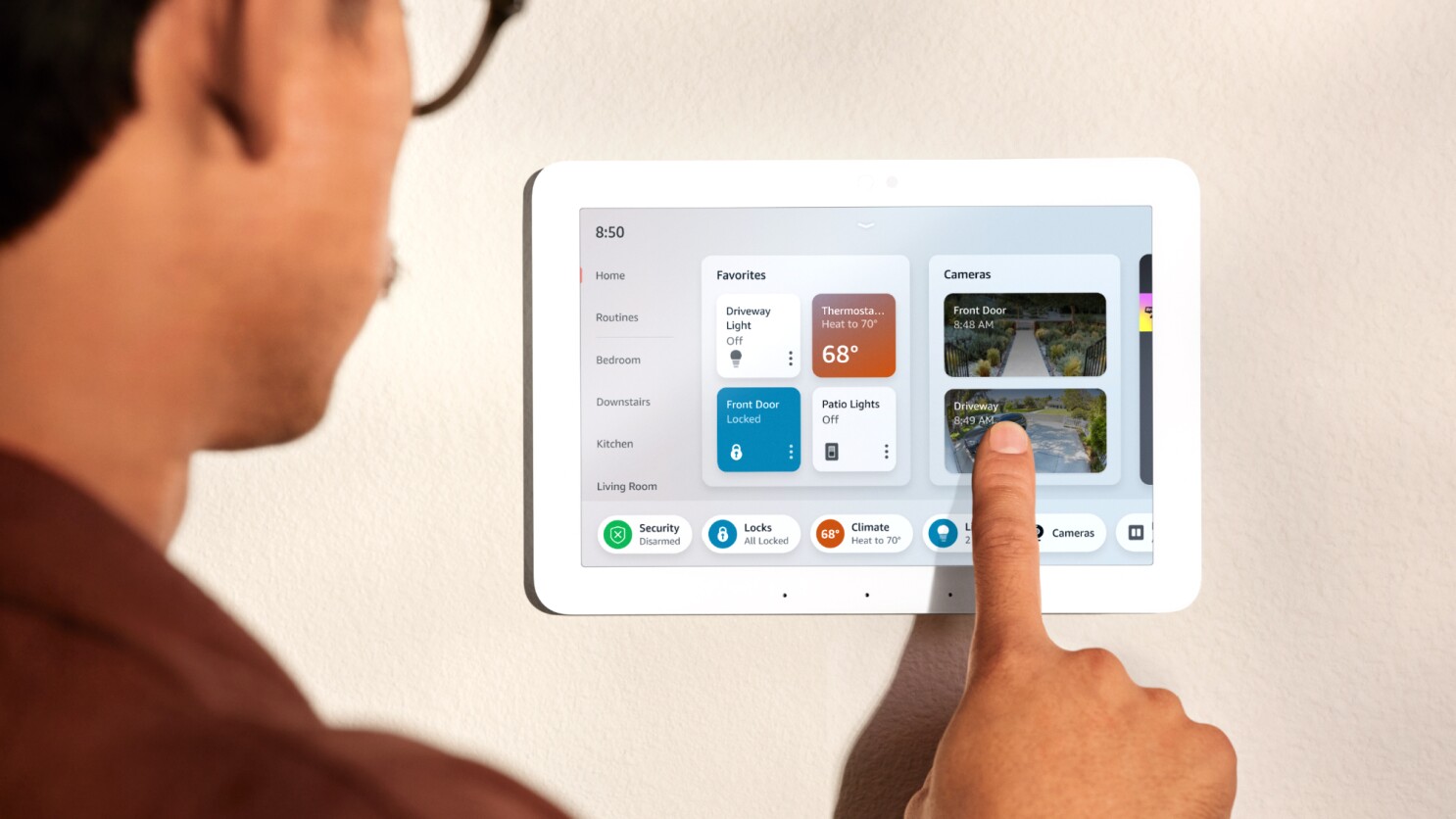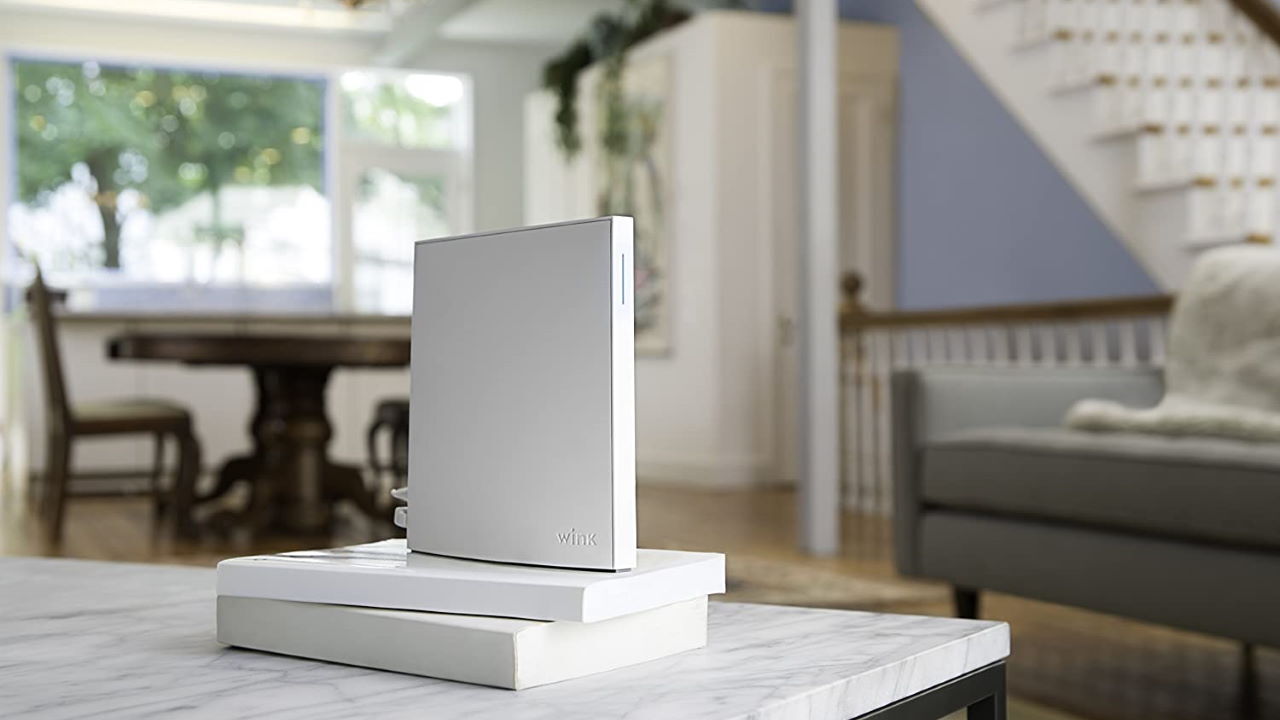Introduction
Welcome to the world of smart homes, where technology seamlessly integrates into our daily lives to make them more convenient and efficient. One of the key components of a smart home is a ZigBee smart home hub. If you’re new to the concept, you might be wondering: What exactly is a ZigBee smart home hub?
A ZigBee smart home hub is a central device that acts as the control center for all your smart home devices. It serves as a bridge between these devices, allowing them to communicate with each other and be controlled remotely through a single user interface. Whether it’s controlling your lights, thermostats, security systems, or other smart devices, a ZigBee smart home hub brings everything together for a truly connected and intelligent home.
ZigBee, in simple terms, is a wireless communication protocol specifically designed for low-power and low-data-rate applications. It operates on low-energy consumption, ensuring that your smart devices operate efficiently without draining excessive power. This makes ZigBee an ideal choice for smart home automation, where numerous devices need to communicate wirelessly without compromising on battery life.
With a ZigBee smart home hub, you can take full control of your smart home ecosystem. Imagine effortlessly dimming the lights, adjusting the temperature, and locking your doors, all from a single app or voice command. It not only simplifies your everyday tasks but also offers tremendous flexibility in customizing and automating your home according to your lifestyle and preferences.
In this article, we will explore the world of ZigBee smart home hubs in detail. We’ll delve into how they work, their benefits, and how to choose the right one for your home. If you’re considering upgrading your home to a smart home or just looking to expand your existing smart home system, this article will provide you with all the information you need.
What Is ZigBee?
ZigBee is a wireless communication protocol that is specifically designed for low-power, low-data-rate applications. It operates on the IEEE 802.15.4 standard and is widely used in various industries, including home automation, healthcare, and industrial control systems.
The name “ZigBee” was derived from the zigzag path a bee takes while collecting nectar from flowers. This signifies the network’s ability to create dynamic and flexible routes for data transmission between devices.
One of the key advantages of ZigBee is its low energy consumption. It is designed to operate on battery-powered devices, ensuring that they can run for extended periods without the need for frequent battery replacements. This makes ZigBee an optimal choice for smart home devices that require long battery life, such as sensors, light bulbs, and door locks.
Another notable feature of ZigBee is its mesh networking capability. With mesh networking, ZigBee devices can create a network where messages can be relayed from one device to another, extending the range and coverage of the network. This enables robust and reliable connectivity, even in large or complex environments.
ZigBee operates on the 2.4 GHz ISM band, which is a globally available frequency range for wireless communication. This allows ZigBee devices to work seamlessly across different regions and countries without the need for modifications or additional infrastructure.
Furthermore, ZigBee supports multiple network topologies, including star, tree, and mesh. The choice of topology depends on the specific use case and requirements of the application. Star topology is commonly used in home automation, where a central hub serves as the coordinator for all connected devices. Mesh topology, on the other hand, is frequently employed in larger networks, where devices can communicate directly with each other, creating redundant paths for data transmission.
In summary, ZigBee is a wireless communication protocol that offers low-power consumption, mesh networking, and global compatibility. Its wide range of applications and industry support make it a popular choice for building smart home ecosystems and enabling efficient and reliable device communication.
Understanding Smart Home Hubs
A smart home hub is a central device that integrates and controls all your smart home devices. It serves as the brain of your smart home ecosystem, allowing you to manage and automate various aspects of your home from a single interface.
Smart home hubs act as a bridge between different smart devices, enabling them to communicate and work together seamlessly. They support various communication protocols such as ZigBee, Z-Wave, Wi-Fi, and Bluetooth, allowing you to connect a wide range of devices to the hub.
One of the primary functions of a smart home hub is to provide a unified control interface. Instead of managing each device separately through its own app, the hub consolidates all the controls into a single dashboard or mobile app. This simplifies the user experience and makes it easier to monitor and manage your smart home devices.
Smart home hubs also enable automation and scheduling capabilities. By setting up rules and routines, you can create personalized automation sequences that trigger specific actions based on predefined conditions. For example, you can automate your lights to turn on gradually in the morning or set your thermostat to adjust to your preferred temperature when you arrive home.
Furthermore, smart home hubs often come with voice control capabilities. They can integrate with popular voice assistants like Amazon Alexa, Google Assistant, or Apple Siri, allowing you to control your smart home devices using voice commands. This adds an extra layer of convenience and hands-free control to your smart home ecosystem.
When it comes to choosing a smart home hub, it’s important to consider compatibility with your existing devices. Not all smart home hubs support every communication protocol, so make sure the hub you choose is compatible with the devices you already own or plan to purchase.
It’s also worth noting that some devices, especially newer ones, may support multiple protocols. For example, a smart light bulb might be compatible with both ZigBee and Wi-Fi, giving you more flexibility in choosing a hub that fits your needs.
Overall, a smart home hub is a crucial component of any smart home system. It brings all your devices together, simplifies control and automation, and enhances the overall convenience and functionality of your smart home ecosystem.
The Benefits of Using ZigBee Smart Home Hubs
ZigBee smart home hubs offer numerous benefits that enhance the functionality and convenience of your smart home ecosystem. Let’s explore some of the key advantages of using ZigBee smart home hubs:
- Compatibility: ZigBee is a widely adopted standard in the smart home industry. This means that there is a vast range of devices available that are compatible with ZigBee smart home hubs. Whether you’re looking for smart lights, sensors, thermostats, or security devices, you’ll have a wide variety of options to choose from.
- Low Power Consumption: ZigBee devices are designed to operate on low power and conserve energy. This is especially important for battery-powered devices such as sensors and door locks. With ZigBee smart home hubs, you can have peace of mind knowing that your smart devices will operate efficiently and won’t drain excessive power.
- Reliable and Secure: ZigBee uses mesh networking, which allows devices to create multiple pathways for data transmission. This ensures robust and reliable communication between devices, even in large homes or areas with obstacles. Additionally, ZigBee employs strong security measures to protect your smart home ecosystem from unauthorized access.
- Interoperability: ZigBee enables interoperability between different devices and brands. This means that you can mix and match ZigBee certified devices from different manufacturers and still have them work seamlessly together through a ZigBee smart home hub. This gives you the freedom to choose the devices that best suit your needs and preferences.
- Easy Scalability: ZigBee smart home hubs allow you to easily expand your smart home system. Whether you want to add new devices or integrate more advanced automation features, ZigBee supports effortless scalability. You can simply connect new ZigBee devices to your hub and adjust the settings to incorporate them into your existing setup.
- Centralized Control: ZigBee smart home hubs provide a centralized control interface, allowing you to manage and control all your connected devices from a single app or dashboard. This streamlines the user experience and eliminates the need to switch between different apps for different devices. You’ll have full control of your smart home at your fingertips.
These benefits make ZigBee smart home hubs an excellent choice for building a reliable, efficient, and interconnected smart home ecosystem. With their wide compatibility, low power consumption, and emphasis on security, ZigBee smart home hubs offer a seamless and enjoyable smart home experience.
How Does a ZigBee Smart Home Hub Work?
A ZigBee smart home hub serves as the central control point for all your ZigBee smart devices. It enables communication and coordination between these devices, allowing you to control and automate various aspects of your smart home ecosystem.
When you set up a ZigBee smart home hub, the first step is to connect it to your home’s Wi-Fi network. This allows the hub to access the internet and communicate with your smart devices, as well as provide remote control capabilities.
Once the ZigBee smart home hub is connected to your network, you can start adding your ZigBee compatible devices to the hub. Each device needs to go through a pairing process, where it is recognized and registered with the hub. This typically involves following the device manufacturer’s instructions and using the hub’s interface or app to initiate the pairing process.
During the pairing process, the ZigBee smart home hub assigns a unique identifier to each connected device. This identifier is used to establish a communication link between the hub and the device. Additionally, the hub ensures secure and encrypted communication channels to protect your data and maintain the integrity of your smart home ecosystem.
Once your devices are paired with the ZigBee smart home hub, they can start communicating with each other and with the hub. This communication takes place using the ZigBee wireless protocol, which operates on the 2.4 GHz frequency band.
ZigBee devices can transmit and receive data using short-range radio waves. They can communicate directly with the hub or through other nearby ZigBee devices, forming a mesh network. In a mesh network, devices act as repeaters, relaying data to improve the range and coverage of the network.
The ZigBee smart home hub acts as a centralized hub for all the connected devices. It receives commands from the user or automation routines and sends them to the appropriate devices. For example, if you want to turn off the lights in a specific room, you can issue a command through the hub, and it will convey the command to the corresponding ZigBee light bulbs in that room.
ZigBee smart home hubs often come with a user-friendly interface or a mobile app that allows you to monitor and control your connected devices. Through the app, you can create schedules, automate routines, receive notifications, and control individual devices or groups of devices with ease.
Overall, the ZigBee smart home hub acts as the central coordination point for your ZigBee smart devices. By facilitating communication and providing control capabilities, it allows you to create a seamlessly connected and automated smart home environment.
Choosing the Right ZigBee Smart Home Hub
When it comes to choosing the right ZigBee smart home hub for your needs, there are several factors to consider. Here are some key points to keep in mind:
- Compatibility: Ensure that the ZigBee smart home hub you choose is compatible with the devices you already have or plan to purchase. Not all devices use the same version of the ZigBee protocol, so it’s important to check for compatibility to ensure seamless integration.
- Range and Coverage: Consider the size of your home and the range of the ZigBee smart home hub. If you have a large home or multiple floors, you’ll want a hub with a strong and wide-reaching signal to ensure connectivity across all areas.
- User Interface: Look for a hub with a user-friendly interface or a mobile app that is intuitive and easy to navigate. The interface should provide convenient control and monitoring functionalities for all your connected devices.
- Automation and Integration: Determine the level of automation and integration capabilities you require. Some ZigBee smart home hubs offer advanced automation features, allowing you to create complex routines and rules. Additionally, check if the hub supports integration with voice assistants like Amazon Alexa or Google Assistant if voice control is important to you.
- Expandability: Consider the ability to expand your smart home system in the future. Look for a ZigBee smart home hub that offers compatibility with a wide range of devices and allows for easy addition of new devices as you expand your smart home ecosystem.
- Security Features: Ensure that the ZigBee smart home hub has robust security features to protect your data and preserve the privacy of your smart home. Look for features like secure communication protocols, encryption, and regular firmware updates.
- Brand Reputation: Research the reputation and reliability of the brand manufacturing the ZigBee smart home hub. Read customer reviews and check for product support, warranty, and customer service to ensure a positive experience with your chosen hub.
Take the time to evaluate your specific needs and compare different ZigBee smart home hub options. Consider the features, compatibility, expandability, and overall user experience to choose the right hub that aligns with your preferences and requirements.
Setting up a ZigBee Smart Home Hub
Setting up a ZigBee smart home hub is a relatively straightforward process. Here are the general steps to get your ZigBee hub up and running:
- Choose a Location: Select a suitable location for your ZigBee smart home hub. Ideally, it should be placed centrally in your home, away from obstructions that may interfere with the wireless signal.
- Connect to Power: Plug in the power adapter of the ZigBee smart home hub and ensure that it has a stable power source. Some hubs may also include a backup battery for power outages.
- Connect to Wi-Fi: Use the hub’s provided interface or mobile app to connect it to your home’s Wi-Fi network. This allows the hub to access the internet and communicate with your smart devices.
- Follow Pairing Instructions: Each ZigBee device has its own pairing process. Refer to the device manufacturer’s instructions to put your devices in pairing mode and pair them with the ZigBee smart home hub. This typically involves pressing a button or following specific commands on the hub’s interface.
- Add Devices to the Hub: Once the ZigBee devices are in pairing mode, use the hub’s interface or app to scan for and add the devices to your hub. The hub will assign a unique identifier to each device for communication purposes.
- Test Connection: After pairing the devices, perform tests to ensure that the devices are communicating properly with the ZigBee smart home hub. Turn on lights, adjust thermostat settings, or test any other desired device functionality to verify connectivity.
- Set up Automation and Control: Utilize the hub’s interface or app to set up automation routines and control preferences. Create schedules, set up scenes, or establish rules to automate various aspects of your smart home system.
- Expand and Customize: As you become familiar with your ZigBee smart home hub, you can add more devices and customize your smart home setup. Explore additional features, such as integrating voice assistants, adding new devices, or configuring advanced automation sequences.
Be sure to refer to the specific instructions provided by your ZigBee smart home hub manufacturer. They may have additional guidance or specific steps tailored to their product. Following these setup steps will help you get your ZigBee smart home hub ready to control and manage your smart devices effectively.
Connecting Devices to a ZigBee Smart Home Hub
Connecting your devices to a ZigBee smart home hub is a crucial step in building your smart home ecosystem. Here are the general steps to connect devices to a ZigBee smart home hub:
- Ensure Compatibility: Before purchasing devices, ensure they are compatible with ZigBee technology and your specific ZigBee smart home hub model. Check the device specifications and look for ZigBee certification or compatibility.
- Prepare the Devices: Each ZigBee device may have a slightly different pairing process. Generally, you’ll need to follow the manufacturer’s instructions to ready the device for pairing. This might involve installing batteries, placing the device in pairing mode, or resetting it to factory settings.
- Access Hub’s Interface: Use the hub’s provided interface, such as a mobile app or web portal, to access the pairing process. Typically, there will be a section for adding devices or a dedicated pairing mode.
- Start the Pairing Process: Follow the specific instructions provided by the hub manufacturer to initiate the pairing process. This might involve pressing a pairing button or using the hub’s interface to search for nearby devices.
- Device Discovery: Once the hub is in pairing mode, the devices ready for pairing should be detected and displayed on the hub’s interface. Follow any additional steps outlined in the instructions to establish the connection between the hub and the device.
- Device Confirmation: After successfully pairing a device, the hub will assign a unique identifier to it. This identifier ensures that the device can communicate with the hub and be recognized within the smart home ecosystem.
- Test Device Functionality: After pairing a device, ensure that it is functioning correctly by testing its features and controls. Verify that you can control the device through the hub’s interface and that it responds as expected.
- Repeat for Additional Devices: Repeat the pairing process for each additional ZigBee device you want to connect to the hub. Follow the same steps for each device to ensure proper integration and communication within the smart home system.
- Customize the Setup: Once all devices are connected, use the hub’s interface to customize and organize your smart home setup. Create groups, assign room locations, and configure automation routines to fully optimize and personalize your smart home experience.
It’s essential to consult the specific instructions provided by the device and hub manufacturers for detailed and device-specific pairing processes. Following these general steps will help you connect your ZigBee devices to your smart home hub and begin enjoying the convenience and automation of your smart home ecosystem.
Controlling Your Smart Home with a ZigBee Smart Home Hub
A ZigBee smart home hub serves as the central control point for your smart home devices. Once your devices are connected and paired with the hub, you can take full control of your smart home ecosystem. Here’s how you can control your smart home using a ZigBee smart home hub:
- Single Interface: With a ZigBee smart home hub, you can access and control all your connected devices through a single interface. Whether it’s a dedicated mobile app or a web portal, the hub’s interface provides a convenient and unified control center for managing your smart home.
- Device Control: The hub’s interface allows you to control individual devices or groups of devices. You can turn lights on or off, adjust thermostats, lock doors, control blinds, or perform any other supported device actions directly from the hub’s interface.
- Automation and Routines: A ZigBee smart home hub enables automation and routines. You can create custom routines or schedules that automate specific actions based on predefined conditions. For example, you can set lights to turn on automatically at sunset or have your thermostat adjust temperature settings based on occupancy.
- Voice Control: Many ZigBee smart home hubs integrate with popular voice assistants like Amazon Alexa or Google Assistant. This allows you to control your smart home devices using voice commands. Simply activate the voice assistant and issue commands to control lights, adjust settings, or perform other supported actions.
- Scene Management: ZigBee smart home hubs often support scenes or moods, allowing you to configure predefined settings for specific scenarios. For example, you can create a “Movie Night” scene that dims the lights, lowers the blinds, and adjusts the temperature to create the perfect ambiance.
- Remote Access: Most ZigBee smart home hubs offer remote access capabilities. This means that even when you’re away from home, you can control your smart devices through the hub’s interface using a smartphone, tablet, or web browser. This provides flexibility and peace of mind, allowing you to monitor and control your home from anywhere.
- Notifications and Alerts: ZigBee smart home hubs can send notifications and alerts to keep you informed about the status of your smart home devices. Whether it’s a low battery notification or a security alert, the hub can notify you through the interface or via email, ensuring that you stay informed and aware of any important events.
With a ZigBee smart home hub, you have complete control over your smart home devices. Through a single interface, you can manage, automate, and customize your smart home experience according to your preferences and lifestyle. Whether it’s through direct control, automation routines, voice commands, or remote access, the ZigBee smart home hub puts you in charge of your smart home ecosystem.
Troubleshooting Common Issues with ZigBee Smart Home Hubs
While ZigBee smart home hubs offer a convenient and efficient way to manage your smart home, you may encounter some common issues. Here are some troubleshooting steps to help address these issues:
- Device Pairing Failure: If you’re unable to pair a ZigBee device with your hub, ensure that the device is in pairing mode and follow the hub’s pairing instructions precisely. Restarting the hub or device and bringing them closer to each other can also help establish a successful pairing.
- Interference or Range Issues: If you notice connectivity issues or devices that are out of range, there may be interference or obstacles affecting the ZigBee signals. Try relocating the hub or devices to reduce interference, or consider adding ZigBee signal repeaters to extend the network range and improve coverage.
- Unresponsive or Offline Devices: If a device appears unresponsive or offline on the hub’s interface, try power cycling the device by disconnecting and reconnecting it. Ensure that the device’s batteries are charged or replaced if needed. If the issue persists, remove and re-pair the device following the proper pairing process.
- Hub Firmware Update: Check if there are any firmware updates available for your ZigBee smart home hub. Keeping the hub’s firmware up to date can help resolve known issues, improve compatibility, and introduce new features. Follow the manufacturer’s instructions to update the hub’s firmware if necessary.
- Wi-Fi Network Connection: If the hub is having difficulty connecting to your Wi-Fi network, ensure that the network name (SSID) and password entered in the hub’s interface are correct. Consider restarting both the hub and router to establish a fresh connection. If the issue persists, check if any firewall settings or network security measures might be blocking the hub’s access.
- Application or Interface Errors: If you encounter errors or glitches in the hub’s interface or mobile app, try clearing the app cache, restarting the app, or reinstalling it. Check for any available app updates and ensure that your mobile device is running the latest operating system version supported by the app.
- Device Compatibility: If certain devices are not functioning as expected with the ZigBee smart home hub, ensure that they are compatible with the hub’s firmware version and ZigBee protocol. Verify that the devices you are using have been certified as compatible with the hub to ensure optimal performance.
If you’re unable to resolve the issues on your own, consult the hub’s user manual or reach out to the manufacturer’s customer support for further assistance. They can provide specific troubleshooting steps or guide you through resolving the issues with your ZigBee smart home hub.
Conclusion
In conclusion, ZigBee smart home hubs play a vital role in creating a connected and efficient smart home ecosystem. With their compatibility, low power consumption, and robust mesh networking capabilities, ZigBee smart home hubs offer seamless communication and control of your smart devices.
By serving as the central control point, ZigBee smart home hubs simplify the management and automation of your smart home. They provide a single interface for controlling individual devices, creating automation routines, and overseeing various aspects of your smart home ecosystem.
With a ZigBee smart home hub, you can enjoy the benefits of convenience, energy efficiency, and enhanced security. You have the ability to control your smart home devices remotely, integrate with voice assistants for hands-free operation, and create customized automation scenarios to fit your lifestyle.
When choosing a ZigBee smart home hub, consider factors such as compatibility, range, user interface, expandability, security features, and brand reputation. By selecting the right hub for your needs, you can ensure seamless integration and optimal performance of your devices.
If you encounter any issues with your ZigBee smart home hub, follow troubleshooting steps such as ensuring proper pairing, addressing interference or range problems, updating firmware, and verifying device compatibility. If needed, consult the manufacturer’s support resources for further assistance.
In summary, a ZigBee smart home hub is a valuable addition to any smart home setup. It offers centralized control, automation capabilities, and the ability to create a truly connected home experience. With a ZigBee smart home hub, you can enjoy the convenience, efficiency, and seamless integration of your smart devices, making your everyday life more enjoyable and effortless.







